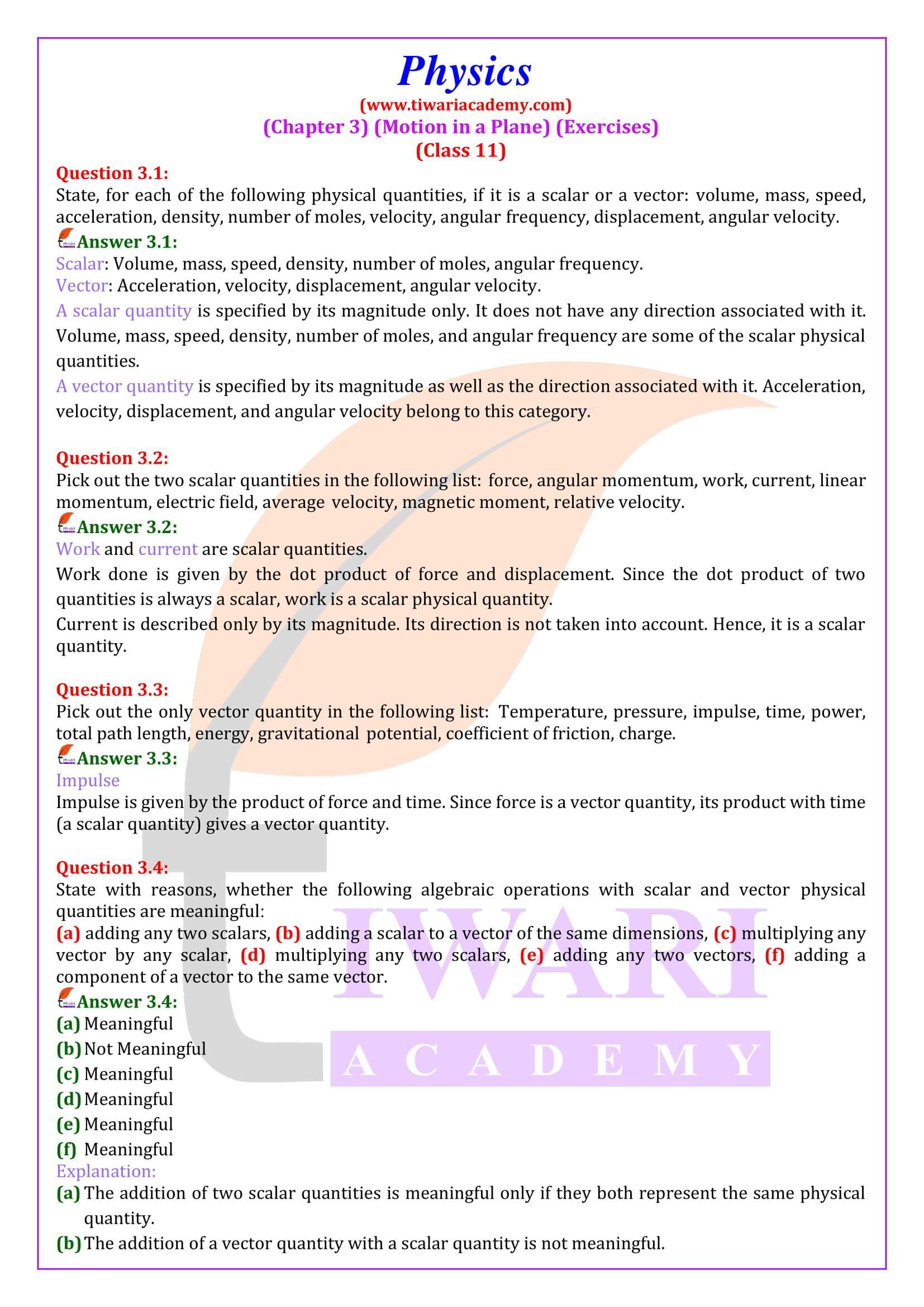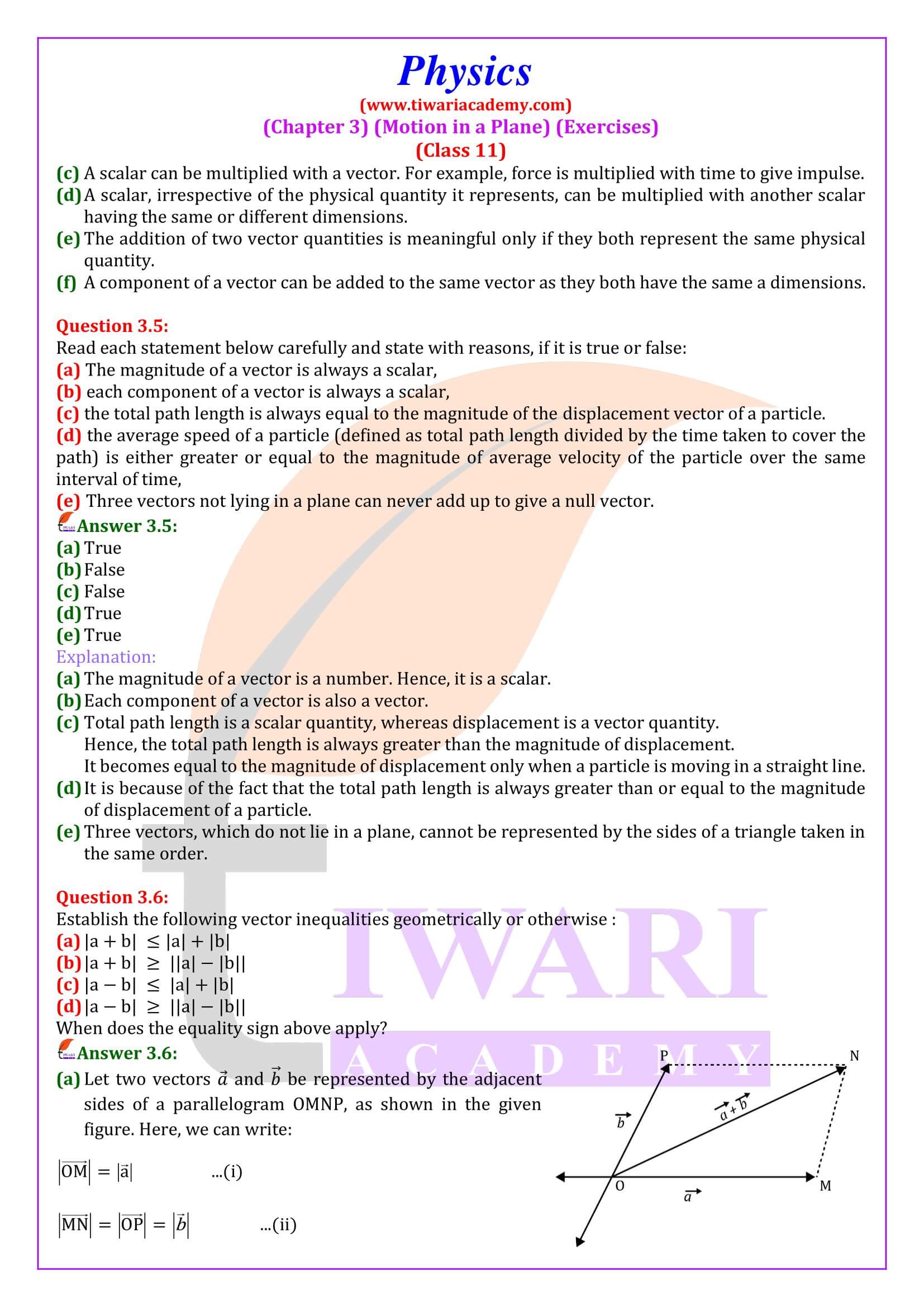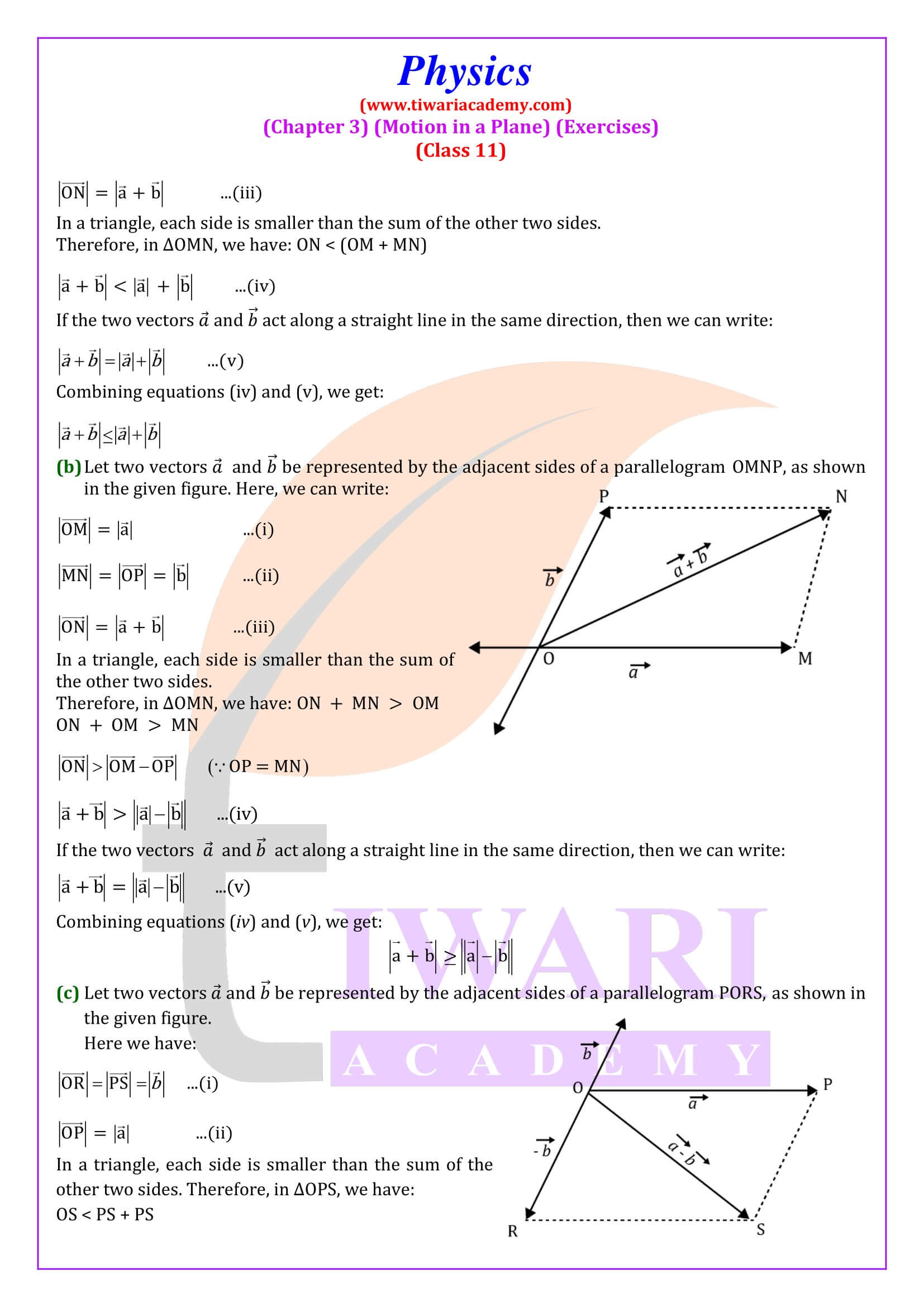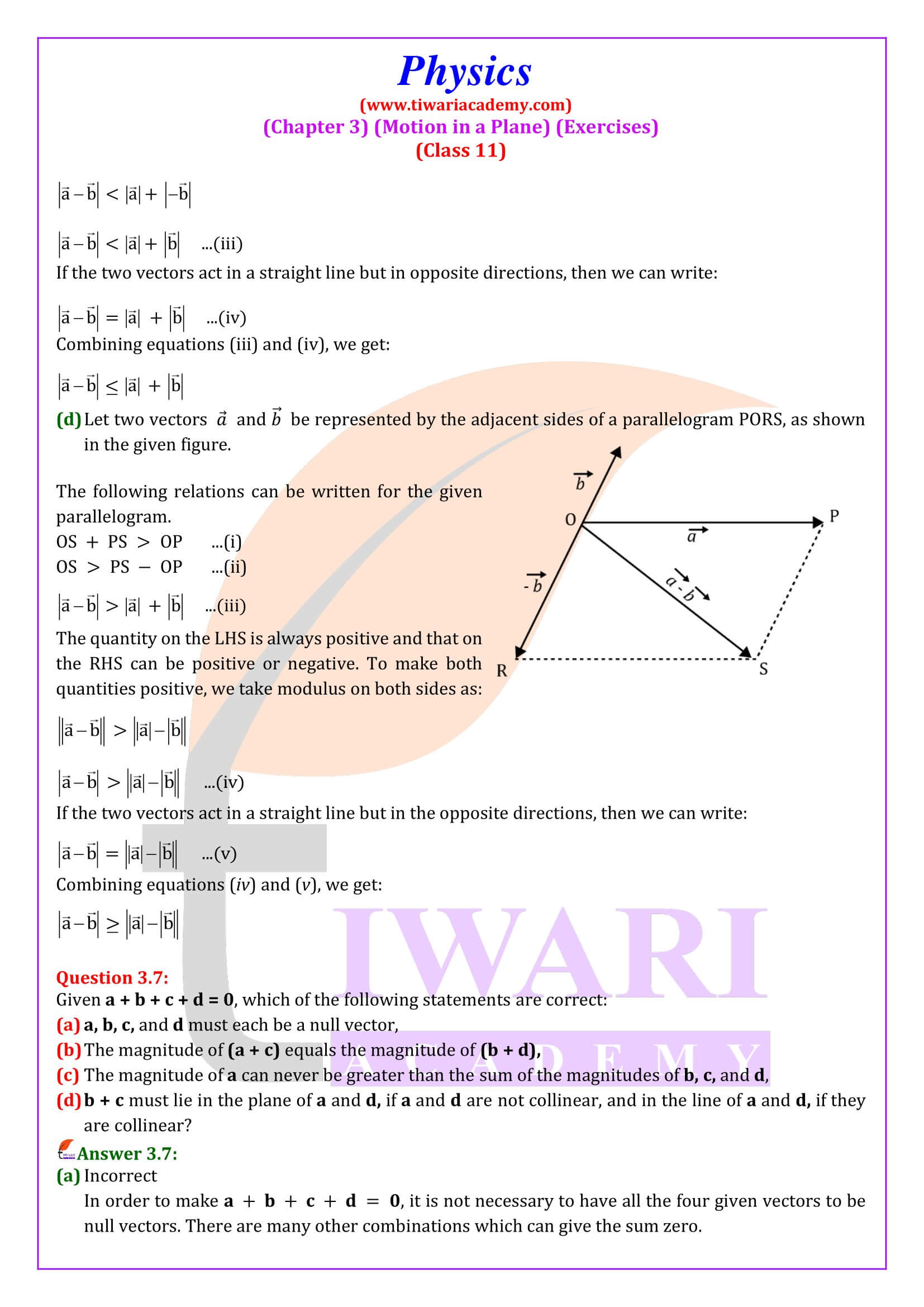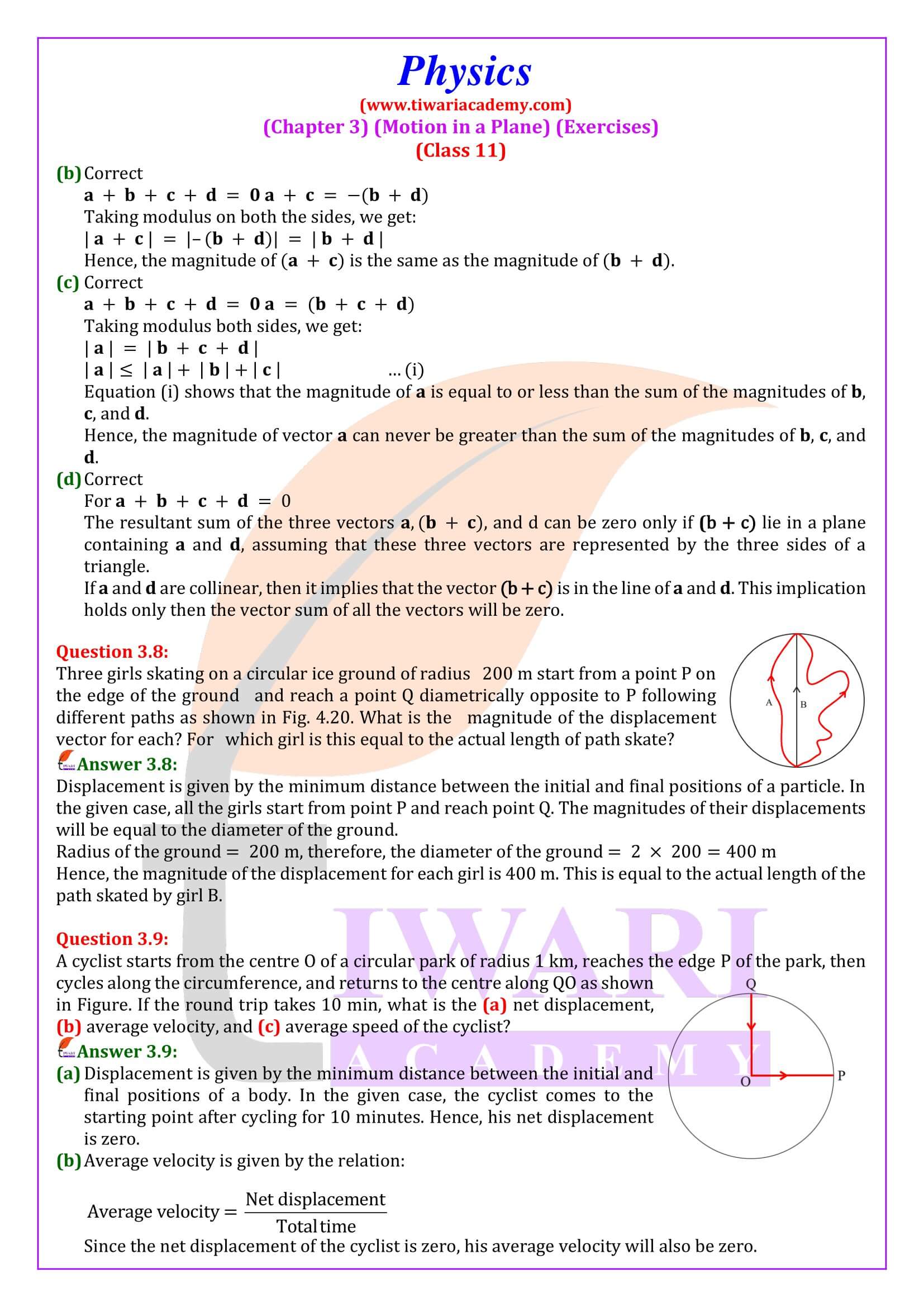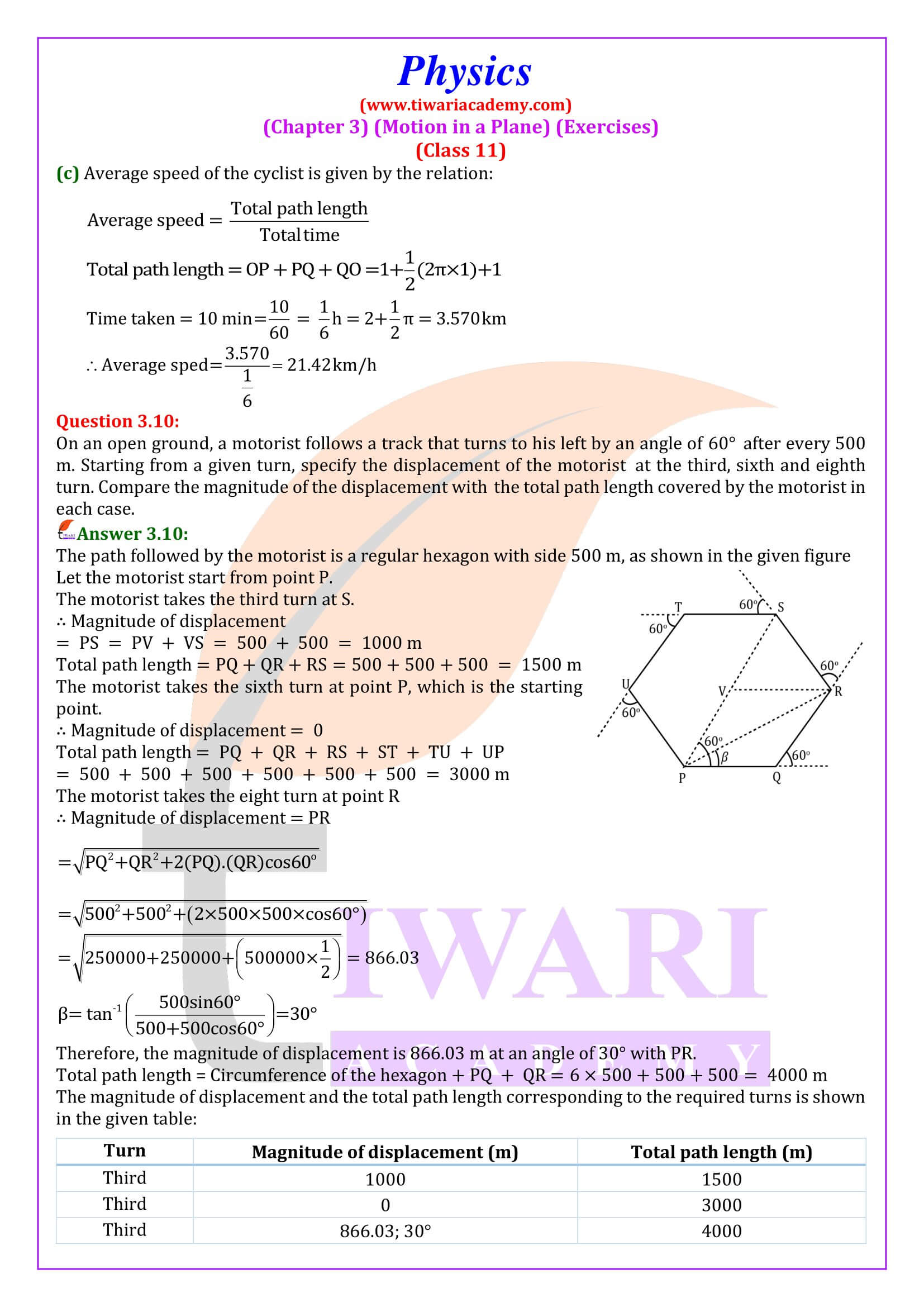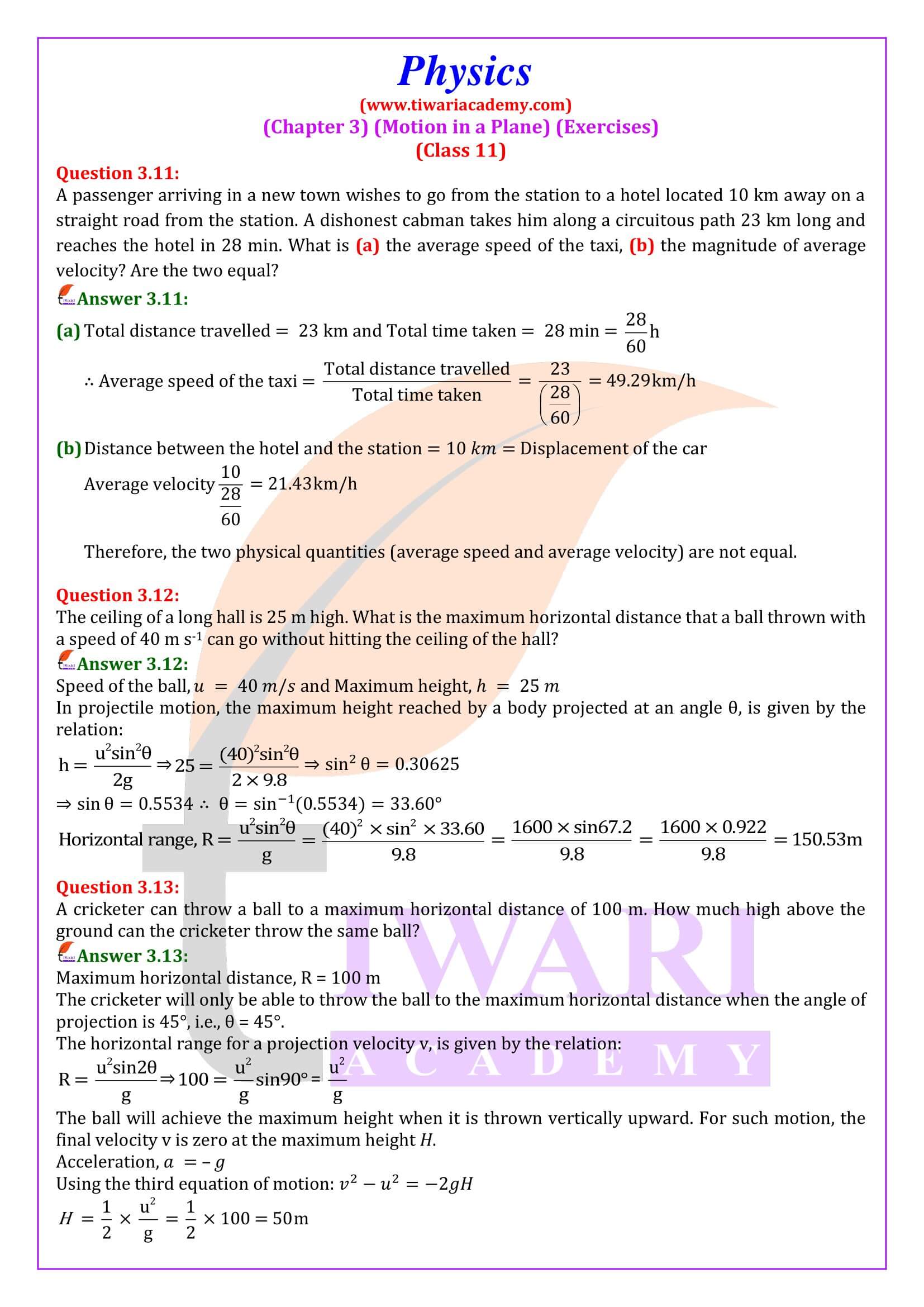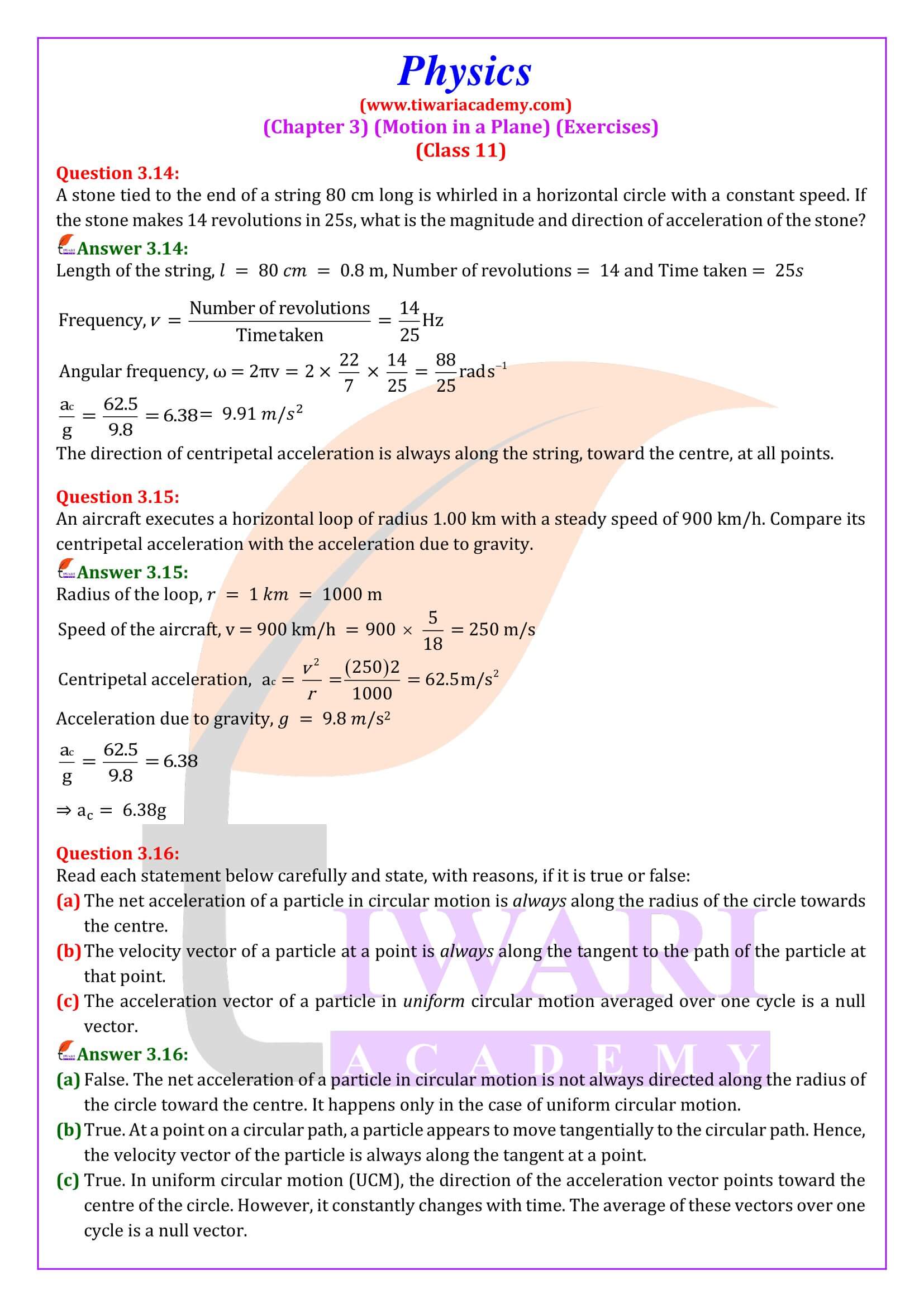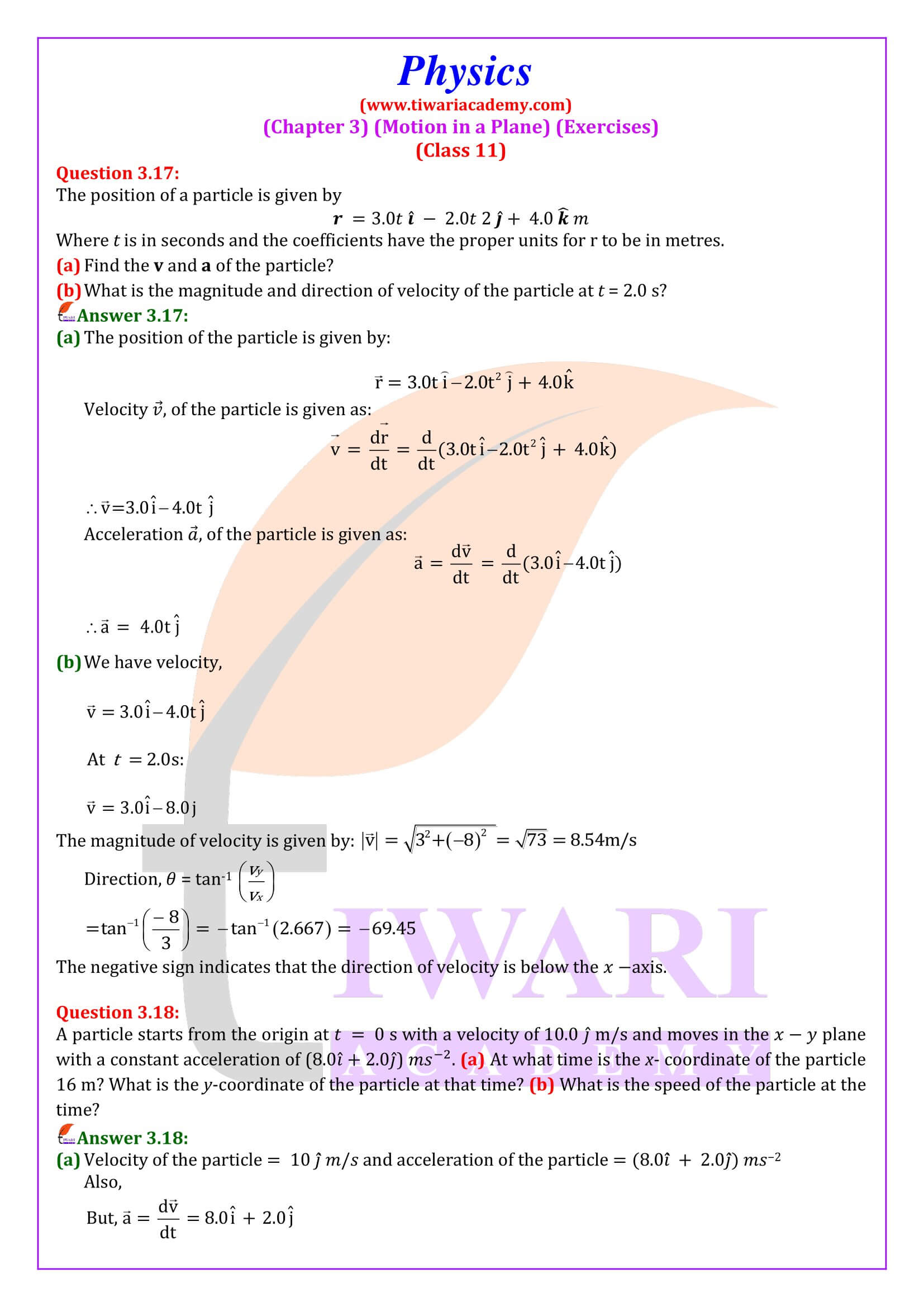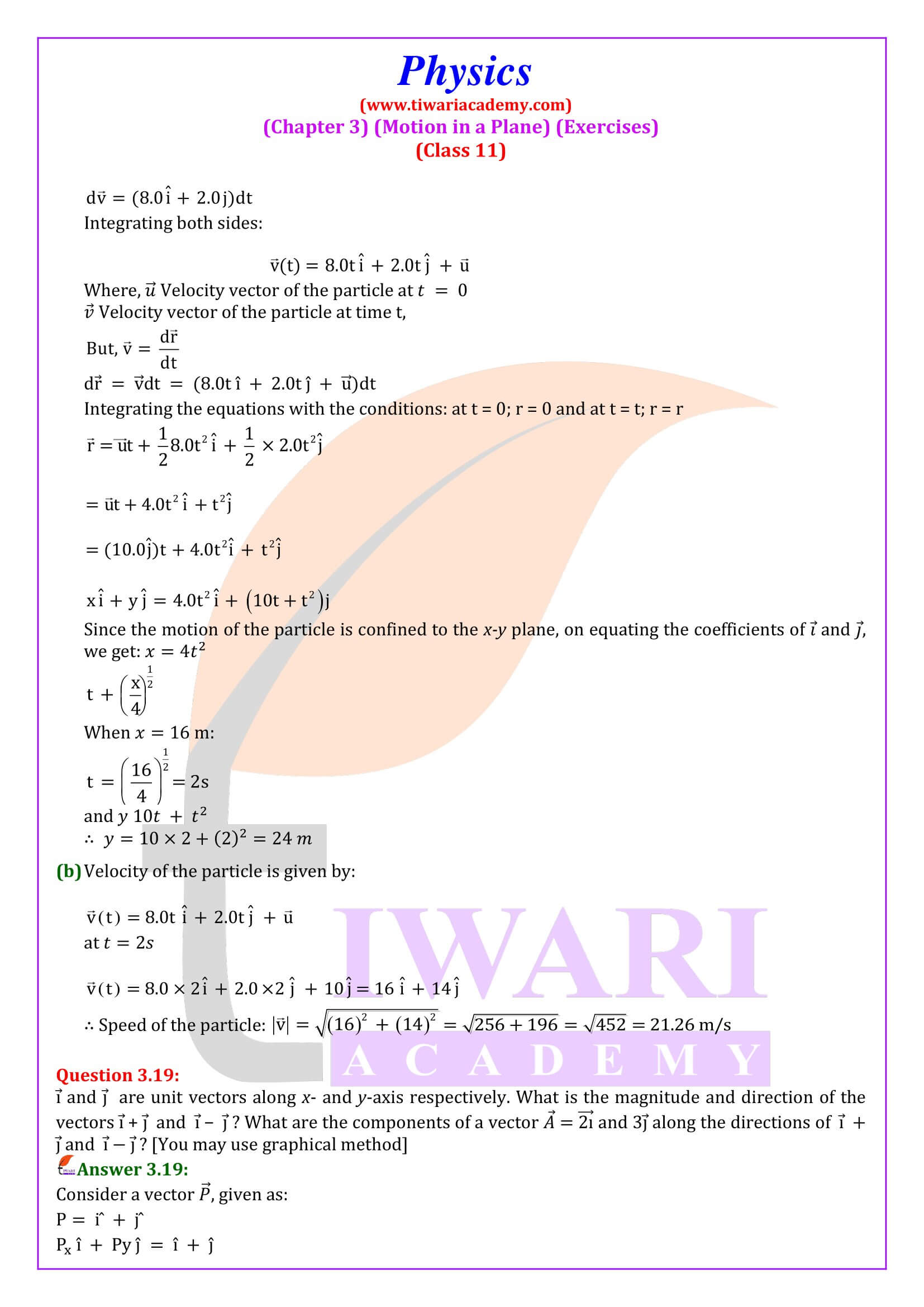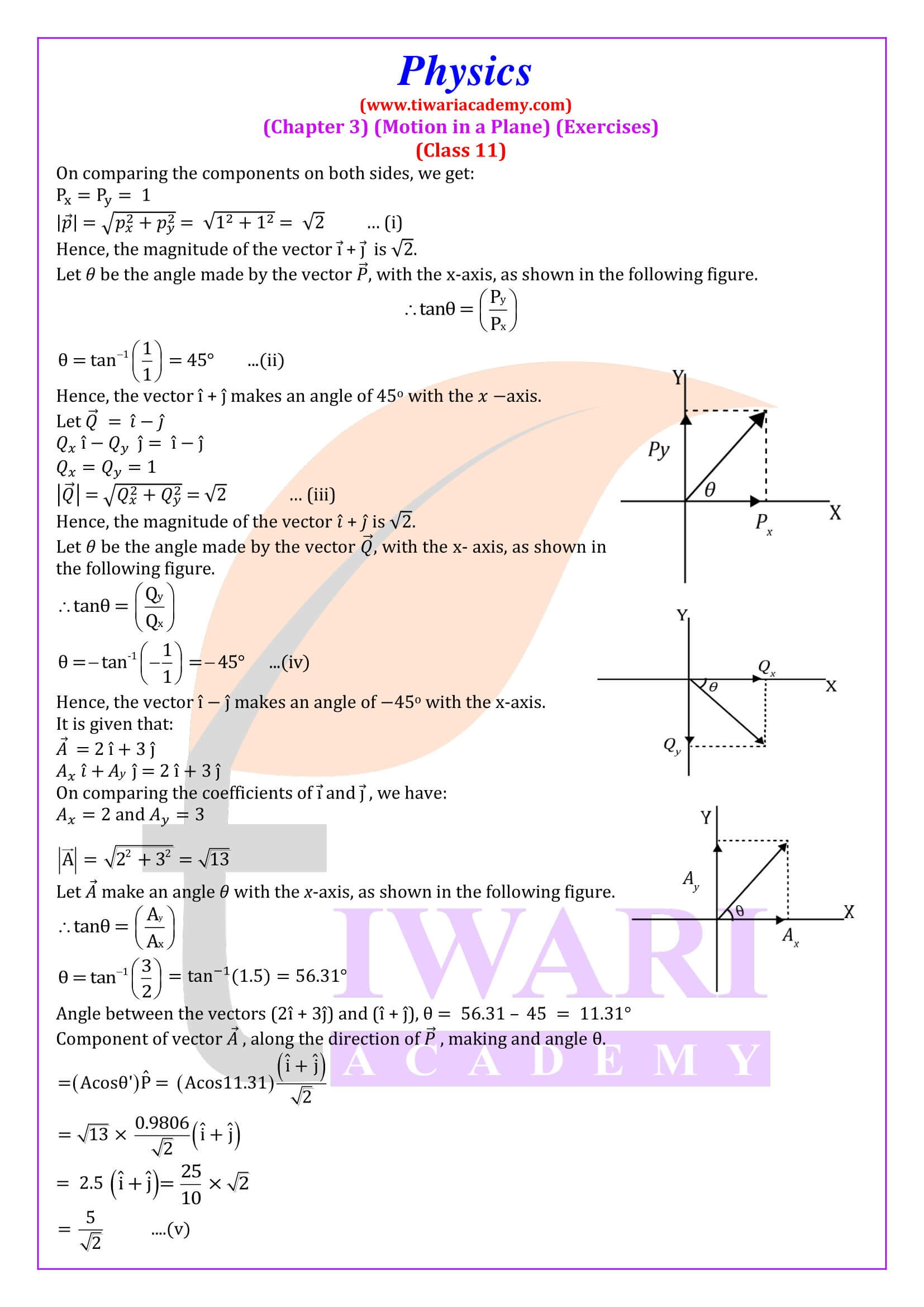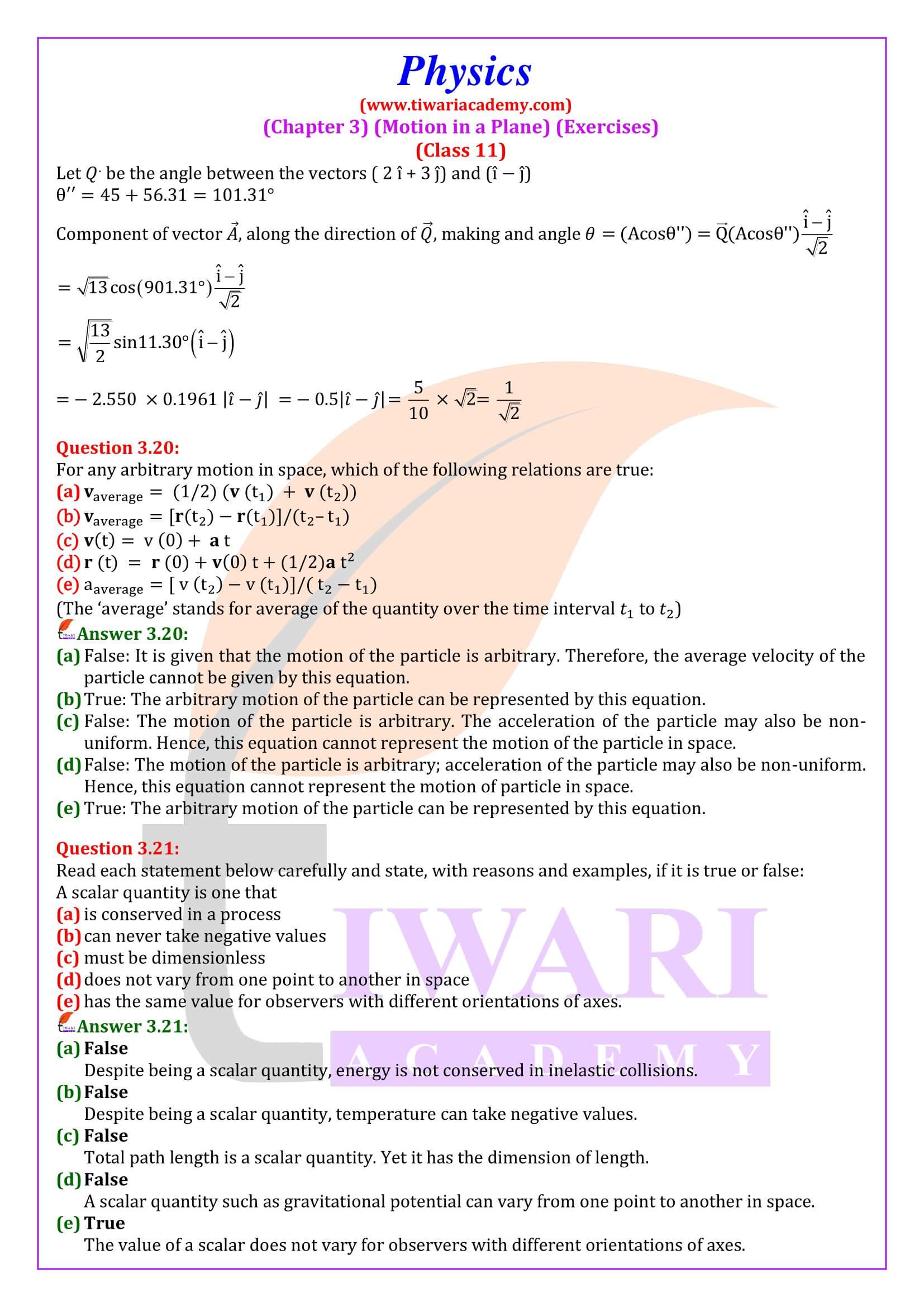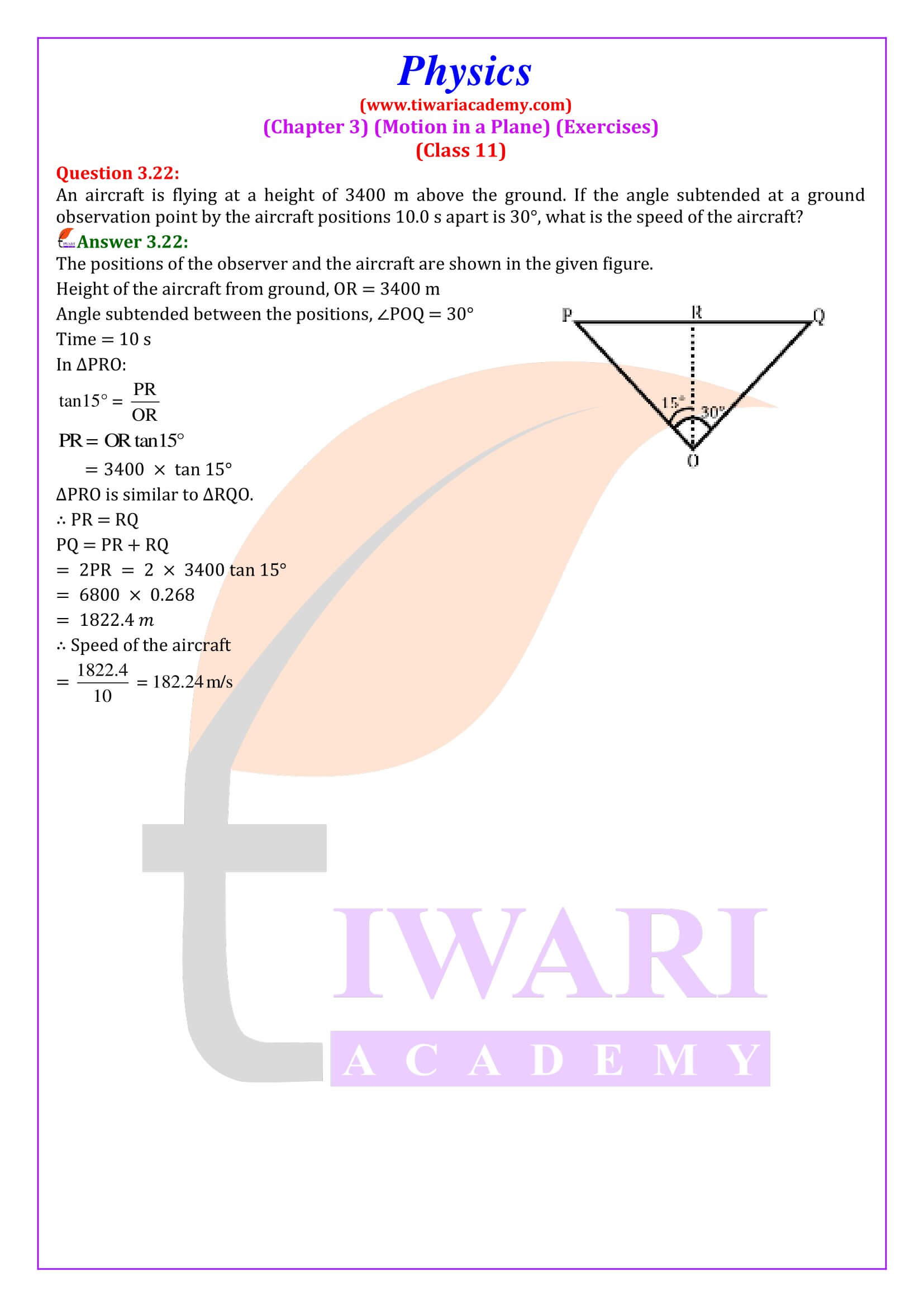NCERT Solutions for Class 11 Physics Chapter 3 Motion in a Plane in Hindi and English Medium updated for CBSE and State board students session 2025-26 with MCQ and extra important question answers. Once you’ve practiced the problems from the NCERT textbook chapter 3, look for additional practice questions from other resources. This could include question banks, previous year question papers, or supplementary study guides.
Class 11 Physics Chapter 3 Motion in a Plane Question Answers
Class 11 Physics Chapter 3 MCQ
The angular velocity depends upon the rate of change of the
The path of a particle is given by the expression y=at+bt², where a and b are constant. Y is the displacement at time. Its velocity at any instant is given by
A body is moving along a circle with an increasing speed. It possesses
The word centripetal is derived from two Greek words meaning
Vector Operations
Vector operations are extensions of the laws of elementary algebra to vectors. They include three types, subtraction and multiplication. The sum of the two vectors is called the third vector, which is represented as the diagonal of the parallelogram and is formed with the two original vectors as sides. Multiplying a vector by another vector b gives the dot product, denoted a.b and the cross product, denoted a×b. The dot product, also known as the scalar product, that is, a scalar real number equal to the product of the lengths of vectors a, b and the cosine angle between them.
Class 11 Physics Chapter 3 Multiple Choice Questions
The centripetal component of acceleration arises when
One radian is defined to be the angle subtended where the arc length S is exactly equal to the
The path followed by a projectile is called its
When a body P moves on a circular path, the centripetal acceleration is
Movement of objects in a plane
Planar motion is also called two-dimensional motion. Such as circular motion, parabolic motion, etc. For the analysis of this type of movement, the reference point will be the origin and the two axes X and Y.
In-plane movement occurs when the points that we consider movement form a two-dimensional plane. Here, considering the above situation, we usually consider two axes, X axis and Y axis. To derive the equations of motion in a plane, we use unidirectional motion of an object.
Projectile Movement
Projectile motion is a form of motion in which an object or particle is projected near the Earth’s surface and moved along a curved path solely by gravity. The study of this movement is called parabolic, and such a trajectory is a parabolic trajectory. The only mathematical force actively acting on this moving object is gravity, which acts downward, giving the object downward acceleration toward the Earth’s center of mass. Due to the object’s inertia, no external force is needed to maintain the horizontal velocity component of the object’s motion. The curve was shown by Galileo as a parabola, but could also be a straight line in the special case where object is projected upwards.
Considering other forces, such as aerodynamic drag or internal propulsion, requires additional analysis. Projectile is a kinetic science that deals with the flight, behavior and impact of projectiles, especially bullets, unguided bombs. A rocket, or a similar science or art of designing and accelerating a projectile to achieve a desired performance.
What are the core concepts of linear motion given in Class 11 Physics Chapter 3?
Linear motion, which is also called linear motion is explained deeply in chapter 3 of 11th Physics. This motion is called one-dimensional motion along a straight line, so it can be explained using only one spatial dimension. In 11th Physics, there are two types of linear motion: uniform linear motion with constant speed and zero acceleration and non-uniform linear motion with variable speed and non-zero acceleration. This is called the most fundamental of all actions. Linear motion can be compared to general motion to some extent. An example of linear motion is a car running on a straight road.
How can the topic Uniform Circular Motion be explained in 11th Physical Chapter 3?
In class 11 Physics, the circular motion is explained through vectors. Circular motion is the path that moves the body in a circular motion. Similarly, when the motion of an object on a circular path is followed by uniform motion, it is called uniform circular motion. In NCERT textbook of 11th Physics examples and exercises question also help to understand chapter 3. The speed of the body is the same, but the speed changes. In circular motion, the object constantly changes its direction. During this motions, the object touches the edge of the circle but never cross it.
What are the main terms of scalar or vector in Class 11 Physics chapter 3?
Class 11 Physics chapter 3 explains scalar and vectors with suitable examples. A quantity that has magnitude but no direction is called a scalar. A quantity having magnitude as well as direction is called a vector quantity. Ample examples and practice questions are given in chapter 4 of 11th Physics to understand the concepts of vectors. A scalar is always the dot product of two quantities, and a vector is always the cross product of two vectors. Examples of scalars are mass, density, and current. Some examples of vectors are acceleration, velocity, and displacement. The difference between these quantities is now clear to understand.
